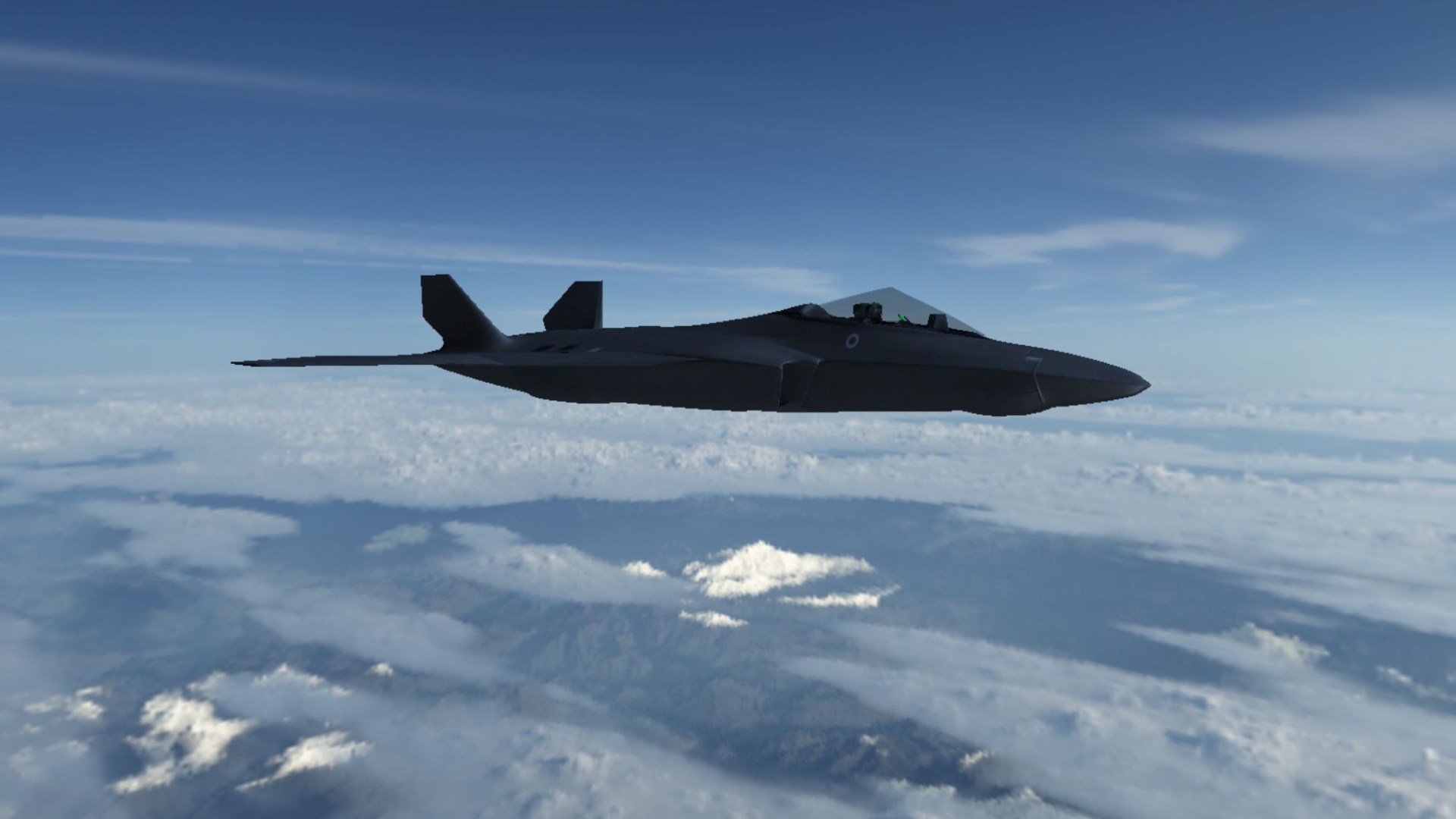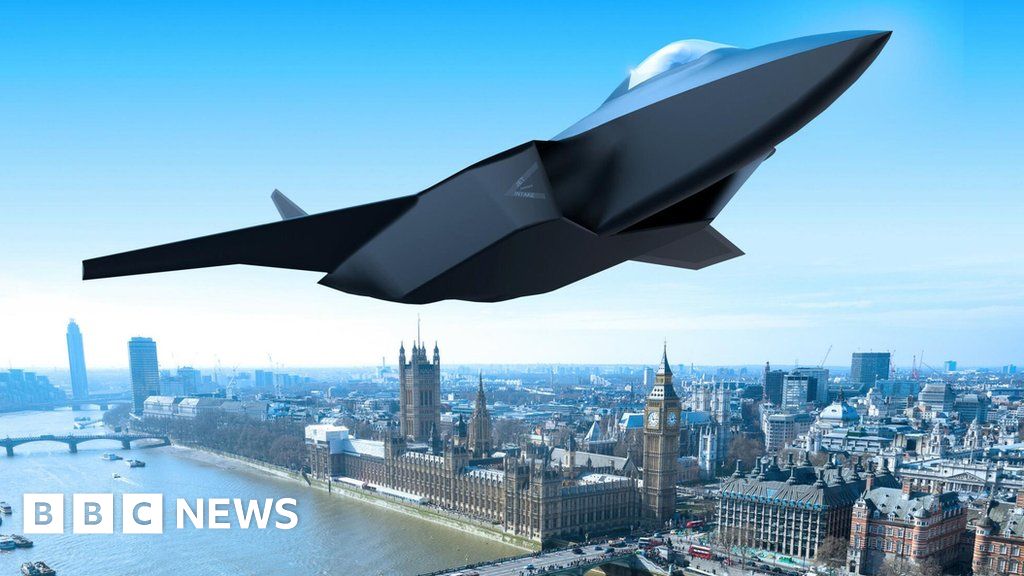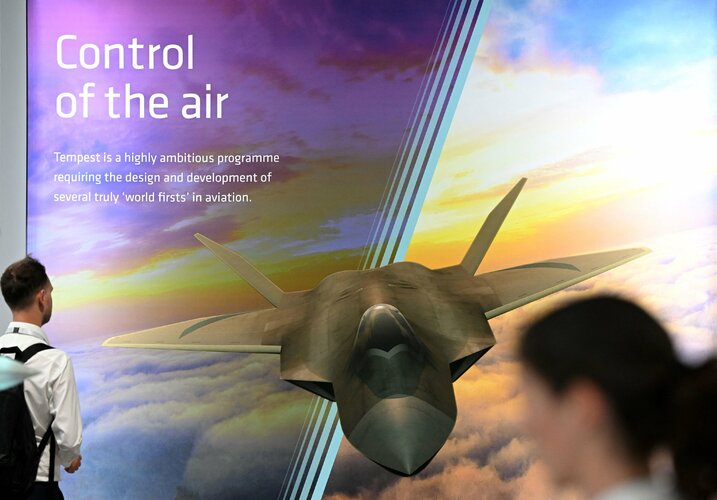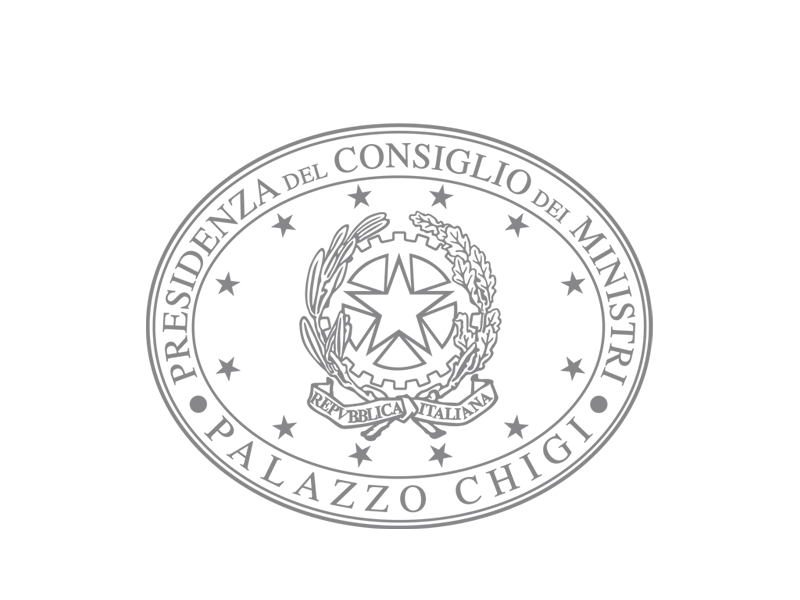Forest Green
ACCESS: Above Top Secret
- Joined
- 11 June 2019
- Messages
- 9,523
- Reaction score
- 17,462
Wow, only a few?I think there are a few assumptions in the scenario above
Wow, only a few?I think there are a few assumptions in the scenario above

No assumptions, merely stating the obvious.I think there are a few assumptions in the scenario above (as it relates to the Tempest program) .........................
I never said that BAE is a nobody, but if it were easy to develop a stealth fighter on their own they would already have done that at the time of the F-22, yet they kept working on the non-stealth Typhoon/Eurofighter.Aye the glory days of British aviation are long over.
But it would be wrong to right off BAE Systems as a nobody .................
You could say that for all the European defence companies working on the Typhoon, and Dassault working on the Rafale.I never said that BAE is a nobody, but if it were easy to develop a stealth fighter on their own they would already have done that at the time of the F-22, yet they kept working on the non-stealth Typhoon/Eurofighter.
Based on your own logic, neither will survive.The only fighter project that survives will be the European SCAF, not the English Tempest.
The JUIS Fighter?Fighty McFightface?
It's governments that set performance criteria and budgets for production, not contractors. Of course the major companies had stealth research and development programmes under way - Replica, Lampyridae etc. - but they weren't going to proceed to production until governments were prepared to request and fund them.t if it were easy to develop a stealth fighter on their own they would already have done that at the time of the F-22, yet they kept working on the non-stealth Typhoon/Eurofighter.
Stealth is an attribute not a category. The F-35 is a strike fighter, quite different from an air superiority type. Even if Typhoon and Tempest are multirole, range, speed, altitude, sensor, and payload requirements make them fundamentally different from a tactical strike aircraft - and such air superiority aircraft are necessary to round out a credible air force if you can afford it (which many can't).
Maybe not even room for one, as most European nations already ordered F-35s which they are not going to replace them already 15 years from now.
Is that tone really necessary? I seem to recall there is a war happening somewhere. Putin has made it clear that he holds grudges that go back centuries to when Sweden was an enemy. The Cold War made neutrality arguably a sensible option for Sweden and Finland, but Russian revanchism now alters the equation.Sweden will also buy F-35s because otherwise they will look like a paria. Always stayed neutral and now they act like a toddler that is afraid of the neighbour's dog and tries to hide under mother's skirt?
Japan, the United Kingdom, and Italy have decided to jointly develop a common aircraft for the next-generation fighter of the Air Self-Defense Force and the Royal Air Force. It aims to deploy around 2035. A joint statement is expected to be released on the 9th.
It is said that it was possible to secure the degree of freedom of upgrade that the Japanese side valued by overseeing the overall design of the aircraft and system development.
It plans to acquire about 300 units in three countries, and aims to export finished products overseas. In Japan, the 'three principles for transferring defense equipment and operating guidelines have become a stepping stone for export, and the government and the ruling party are negotiating to reexamine them.

Japan, the United Kingdom, and Italy have decided to jointly develop a common aircraft for the next-generation fighter of the Air Self-Defense Force and the Royal Air Force. It aims to deploy around 2035. A joint statement is expected to be released on the 9th.
It is said that it was possible to secure the degree of freedom of upgrade that the Japanese side valued by overseeing the overall design of the aircraft and system development.
It plans to acquire about 300 units in three countries, and aims to export finished products overseas. In Japan, the 'three principles for transferring defense equipment and operating guidelines have become a stepping stone for export, and the government and the ruling party are negotiating to reexamine them.
日英の次期戦闘機、イタリア加えた3か国で機体開発…三菱重工など主体
【読売新聞】 航空自衛隊と英空軍の次期戦闘機について、日本と英国、イタリアの3か国が共通機体を共同開発する方針を固めた。2035年頃の配備を目指す。9日に共同声明を発表する見通しだ。 日本は、F2戦闘機の退役が始まる30年代半ばに後www.yomiuri.co.jp
Japan, the United Kingdom, and Italy have decided to jointly develop a common aircraft for the next-generation fighter of the Air Self-Defense Force and the Royal Air Force. It aims to deploy around 2035. A joint statement is expected to be released on the 9th.
It is said that it was possible to secure the degree of freedom of upgrade that the Japanese side valued by overseeing the overall design of the aircraft and system development.
It plans to acquire about 300 units in three countries, and aims to export finished products overseas. In Japan, the 'three principles for transferring defense equipment and operating guidelines have become a stepping stone for export, and the government and the ruling party are negotiating to reexamine them.
日英の次期戦闘機、イタリア加えた3か国で機体開発…三菱重工など主体
【読売新聞】 航空自衛隊と英空軍の次期戦闘機について、日本と英国、イタリアの3か国が共通機体を共同開発する方針を固めた。2035年頃の配備を目指す。9日に共同声明を発表する見通しだ。 日本は、F2戦闘機の退役が始まる30年代半ばに後www.yomiuri.co.jp
Good news for GCAP, but why only 300 units for each user?
Sweden has always been opportunistic. Ask Norwegian elders how they think about the Swedish "neutrality" during WW2. Now they seem to think they can get a free ride within NATO, just join, sit back, and profit from the protection by other nations, free of charge.
..... The F-35 is a strike fighter, quite different from an air superiority type. .........
Is that tone really necessary? I seem to recall there is a war happening somewhere. Putin has made it clear that he holds grudges that go back centuries to when Sweden was an enemy. The Cold War made neutrality arguably a sensible option for Sweden and Finland, but Russian revanchism now alters the equation.Sweden will also buy F-35s because otherwise they will look like a paria. Always stayed neutral and now they act like a toddler that is afraid of the neighbour's dog and tries to hide under mother's skirt?
Sweden has always been opportunistic.
Ask Norwegian elders how they think about the Swedish "neutrality" during WW2. Now they seem to think they can get a free ride within NATO, just join, sit back, and profit from the protection by other nations, free of charge.
F-35 is multi-role. I would rather rely on an F-35 for air superiority than a Typhoon or Tornado or Gripen or Rafale.



JOINT LEADERS’ STATEMENT
As leaders of Japan, Italy and the UK, we are committed to upholding the rules-based, free and open international order, which is more important than ever at a time when these principles are contested, and threats and aggression are increasing. Since defending our democracy, economy and security, and protecting regional stability, are ever more important, we need strong defence and security partnerships, underpinned and reinforced by a credible deterrent capability.
Our three nations have longstanding, close relationships based on the shared values of freedom, democracy, human rights and the rule of law. Today, we are taking the next step in our deepening trilateral partnership. We are announcing the Global Combat Air Programme (GCAP) – an ambitious endeavour to develop a next-generation fighter aircraft by 2035.
Through the GCAP, we will build on our longstanding defence relationships. The GCAP will accelerate our advanced military capability and technological advantage. It will deepen our defence co-operation, science and technology collaboration, integrated supply chains, and further strengthen our defence industrial base.
This programme will deliver wider economic and industrial benefits, supporting jobs and livelihoods across Japan, Italy and the UK. It will attract investment in research and development into digital design and advanced manufacture processes. It will provide opportunities for our next generation of highly skilled engineers and technicians. By working together in a spirit of equal partnership, we are sharing the costs and the benefits of this investment in our people and technologies.
Importantly, the programme will support the sovereign capability of all three countries to design, deliver and upgrade cutting-edge combat air capabilities, well into the future. This programme has been designed with our Allies and partners at its very heart. Future interoperability with the United States, with NATO and with our partners across Europe, the Indo-Pacific and globally – is reflected in the name we have chosen for our programme. This concept will be at the centre of its development. We share ambition for this aircraft to be the centrepiece of a wider combat air system that will function across multiple domains.
Our hope is that the Global Combat Air Programme, and through it our capability partnership, will be a cornerstone of global security, stability and prosperity in the coming decades.


That's 300 in total for those three countries, not each. Eventually the number will grow since there are future demands within those countries that are not represented in that "300" figure (eg: Japan will need to replace F-15JSI in the future and they will most certainly do so with F-X).Good news for GCAP, but why only 300 units for each user?
JASDF's current demand accounts for the replacement of around 90 F-2 fighters with 90 F-X. Though like I've said that will not be the end of their procurement.Perhaps split something like 120 Japan/120 UK/ 60 Italy?
That's 300 in total for those three countries, not each. Eventually the number will grow since there are future demands within those countries that are not represented in that "300" figure (eg: Japan will need to replace F-15JSI in the future and they will most certainly do so with F-X).Good news for GCAP, but why only 300 units for each user?
JASDF's current demand accounts for the replacement of around 90 F-2 fighters with 90 F-X. Though like I've said that will not be the end of their procurement.Perhaps split something like 120 Japan/120 UK/ 60 Italy?
Has to be said but this is a bit of a triumph for British diplomacy and BAE who have put in the hard yards over many years, they had to do the same with Meteor.
If only they could have given the land domain the same focus over the last 30 years...
Did people notice the statement in there between Japan & the US over unmanned systems to work alongside this aircraft.
There might be some thought into making it such, not sure if it would succeed in the long term though.Looks like GCAP is going to be a system of systems instead of just one aircraft as I originally thought, interesting.
The UK is looking at that side of things for its own use under the FCAS programme. GCAP appears to be the manned combat aircraft only. Presumably Italy will continue in FCAS (or have its own programme for some aspects),Looks like GCAP is going to be a system of systems instead of just one aircraft as I originally thought, interesting.
Yes because likely as not BAE Systems sells up its entire airframe manufacturing assets in 2010 (post Nimrod debacle).Aren't we all glad I was not the Minister?
I was referring to Swedens 'opportunistic' attitude when it comes to their past "neutrality".Sweden has always been opportunistic.
All governments are, and for the sake of their mandates, they should be.
Ask Norwegian elders how they think about the Swedish "neutrality" during WW2. Now they seem to think they can get a free ride within NATO, just join, sit back, and profit from the protection by other nations, free of charge.
We're not refighting WWII, we're concerned with someone still bearing a grudge for these wars:
List of wars between Russia and Sweden - Wikipedia
en.wikipedia.org
I was not aware that NATO has subscription fees but gives waivers or that Sweden and Finland have no armed forces or weapons manufacturers of their own. I was also under the delusion that the NATO treaty had something called 'Article 5,' meaning that is, say, Türkiye was attacked, Sweden and Finland would be obligated to come to its aid.
F-35 is multi-role. I would rather rely on an F-35 for air superiority than a Typhoon or Tornado or Gripen or Rafale.
The USAF disagrees with you about the use of strike-optimised jack-of-all-trades aircraft for air superiority. Now the RAF, other European air forces, and Japan have the same opinion, which is why they're aiming to keep the class of the Typhoon type but realise that those particular planes are ageing. They're not ordering more F-35s to succeed them. I suspect that their strategic analysis is not entirely incompetent.
Not sure if this is relevant but:
View: https://www.youtube.com/watch?v=6wj422xeZ2g
Japan's F-X fighter program will merge with the Tempest program.
I kinda expected this because judging from the concept arts and mockups of their jets, they look almost similar to one another, and they share almost the same exact missions and planned technologies. The F-X program team and Team Tempest might as well collaborate together and pool their resources into developing their Sixth-Generation Fighter, sharing the best of both worlds.
Fortunately, the f22, f35 and typhoon are all on one team. The other team are flying warmed over models from the tornado time. U.K. as an example, can still afford to run 2 airframes, which gives several benefits. Smaller countries understandably have to run one airframe.I was referring to Swedens 'opportunistic' attitude when it comes to their past "neutrality".Sweden has always been opportunistic.
All governments are, and for the sake of their mandates, they should be.
Ask Norwegian elders how they think about the Swedish "neutrality" during WW2. Now they seem to think they can get a free ride within NATO, just join, sit back, and profit from the protection by other nations, free of charge.
We're not refighting WWII, we're concerned with someone still bearing a grudge for these wars:
List of wars between Russia and Sweden - Wikipedia
en.wikipedia.org
I was not aware that NATO has subscription fees but gives waivers or that Sweden and Finland have no armed forces or weapons manufacturers of their own. I was also under the delusion that the NATO treaty had something called 'Article 5,' meaning that is, say, Türkiye was attacked, Sweden and Finland would be obligated to come to its aid.
F-35 is multi-role. I would rather rely on an F-35 for air superiority than a Typhoon or Tornado or Gripen or Rafale.
The USAF disagrees with you about the use of strike-optimised jack-of-all-trades aircraft for air superiority. Now the RAF, other European air forces, and Japan have the same opinion, which is why they're aiming to keep the class of the Typhoon type but realise that those particular planes are ageing. They're not ordering more F-35s to succeed them. I suspect that their strategic analysis is not entirely incompetent.
During WW2 they pretended to be neutral but actually collaborated with Germany.
During the cold war they were neutral but assumed that NATO would come to their rescue anyway.
Zelensky thought the same when already before the war he imposed laws that discriminated the Russian speaking minority. But he was wrong, NATO did not send armed forces but merely weapons.
That was a wake-up call for Sweden who now want to join NATO to benefit from 'Article 5', not so much to come to the aid of other NATO members, and especially not Türkiye who tried to block Sweden from joining NATO.
I call Sweden's behavior of the past 85 years 'opportunistic' but I suppose it could also be called 'smart'.
Through the centuries there have been many many many wars in Europe. If all countries would hold still a grudge against each other because of that there could not be a NATO or an EU or a Schengen treaty. Only countries with a dissatisfied Russian speaking minority are at risk from Russia.
The F-35 is not as good as F-22 when it comes to air superiority, but as a 5th generation stealth fighter it would have no trouble shooting down a 4.5 generation non-stealth Typhoon before the Typhoon pilot even knew there was an F-35 in the air. Stealth is not just an attribute, it is a different class of plane.
Yep. I anticipate that it might most likely be the second (Or third, if FCAS gets there faster) Sixth Generation fighter to be up in the air, after the United States' Next Generation Air DominanceNot sure if this is relevant but:
View: https://www.youtube.com/watch?v=6wj422xeZ2g
Japan's F-X fighter program will merge with the Tempest program.
I kinda expected this because judging from the concept arts and mockups of their jets, they look almost similar to one another, and they share almost the same exact missions and planned technologies. The F-X program team and Team Tempest might as well collaborate together and pool their resources into developing their Sixth-Generation Fighter, sharing the best of both worlds.
It will be interesting to see what the final GCAP design will look like once the design is frozen and all three countries agree to the design.
Given Trappier's recent comments there is little chance of FCAS arriving before GCAP. As late as 2050 has been mooted...Yep. I anticipate that it might most likely be the second (Or third, if FCAS gets there faster) Sixth Generation fighter to be up in the air, after the United States' Next Generation Air DominanceNot sure if this is relevant but:
View: https://www.youtube.com/watch?v=6wj422xeZ2g
Japan's F-X fighter program will merge with the Tempest program.
I kinda expected this because judging from the concept arts and mockups of their jets, they look almost similar to one another, and they share almost the same exact missions and planned technologies. The F-X program team and Team Tempest might as well collaborate together and pool their resources into developing their Sixth-Generation Fighter, sharing the best of both worlds.
It will be interesting to see what the final GCAP design will look like once the design is frozen and all three countries agree to the design.
I see. So that means GCAP will be far ahead of FCAS. In that case, it might be better for the FCAS program to merge with the GCAP program, as one Italian Air Force chief once sad (From the article I read): “investing huge financial resources in two equivalent programs is unthinkable.”Given Trappier's recent comments there is little chance of FCAS arriving before GCAP. As late as 2050 has been mooted...Yep. I anticipate that it might most likely be the second (Or third, if FCAS gets there faster) Sixth Generation fighter to be up in the air, after the United States' Next Generation Air DominanceNot sure if this is relevant but:
View: https://www.youtube.com/watch?v=6wj422xeZ2g
Japan's F-X fighter program will merge with the Tempest program.
I kinda expected this because judging from the concept arts and mockups of their jets, they look almost similar to one another, and they share almost the same exact missions and planned technologies. The F-X program team and Team Tempest might as well collaborate together and pool their resources into developing their Sixth-Generation Fighter, sharing the best of both worlds.
It will be interesting to see what the final GCAP design will look like once the design is frozen and all three countries agree to the design.


This is not how it worksIf the UK wants to add a weapon to the JSF integration list, it would be at the back of the queue.....
